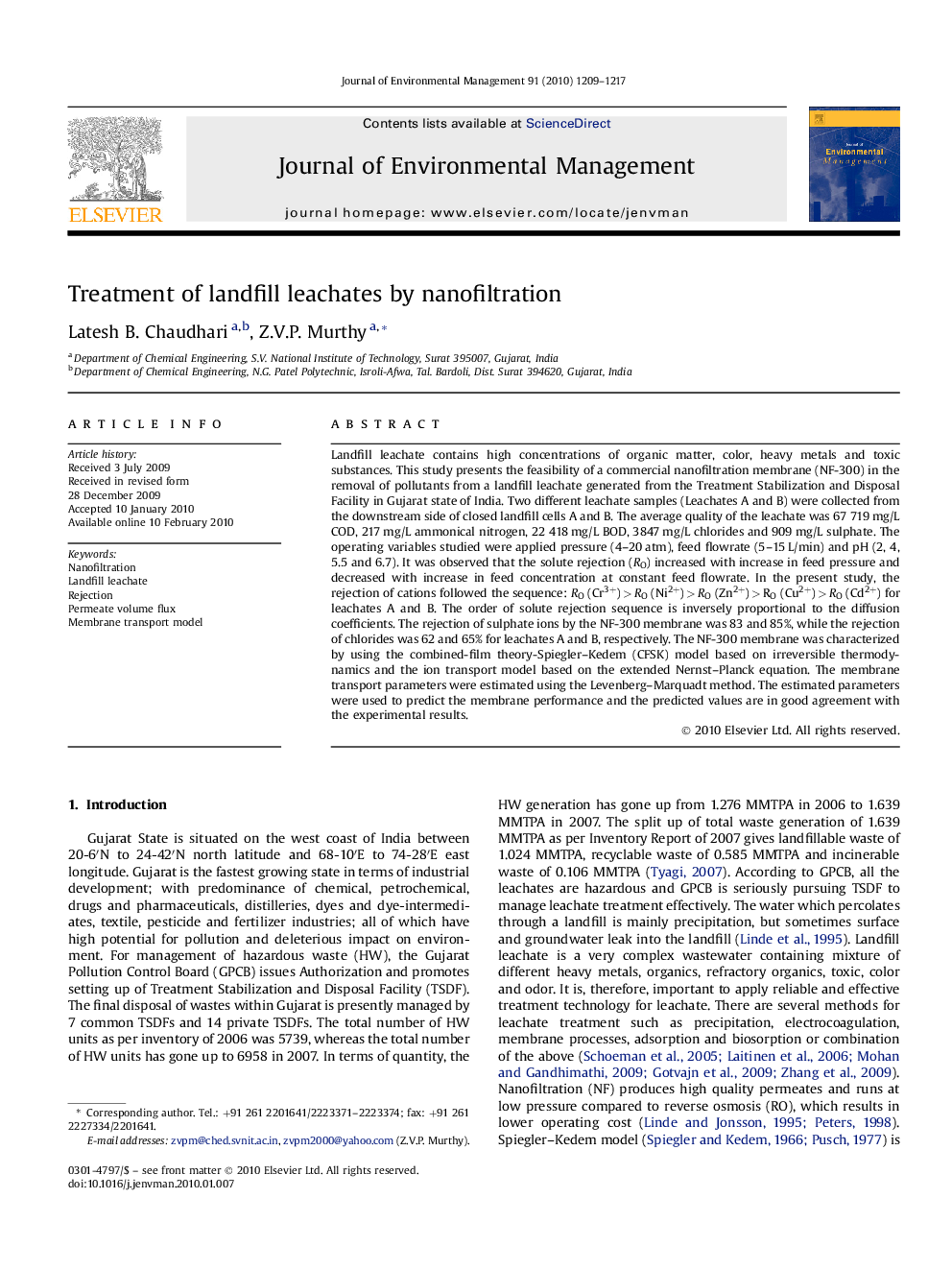| Article ID | Journal | Published Year | Pages | File Type |
|---|---|---|---|---|
| 1057412 | Journal of Environmental Management | 2010 | 9 Pages |
Landfill leachate contains high concentrations of organic matter, color, heavy metals and toxic substances. This study presents the feasibility of a commercial nanofiltration membrane (NF-300) in the removal of pollutants from a landfill leachate generated from the Treatment Stabilization and Disposal Facility in Gujarat state of India. Two different leachate samples (Leachates A and B) were collected from the downstream side of closed landfill cells A and B. The average quality of the leachate was 67 719 mg/L COD, 217 mg/L ammonical nitrogen, 22 418 mg/L BOD, 3847 mg/L chlorides and 909 mg/L sulphate. The operating variables studied were applied pressure (4–20 atm), feed flowrate (5–15 L/min) and pH (2, 4, 5.5 and 6.7). It was observed that the solute rejection (RO) increased with increase in feed pressure and decreased with increase in feed concentration at constant feed flowrate. In the present study, the rejection of cations followed the sequence: RO (Cr3+) > RO (Ni2+) > RO (Zn2+) > RO (Cu2+) > RO (Cd2+) for leachates A and B. The order of solute rejection sequence is inversely proportional to the diffusion coefficients. The rejection of sulphate ions by the NF-300 membrane was 83 and 85%, while the rejection of chlorides was 62 and 65% for leachates A and B, respectively. The NF-300 membrane was characterized by using the combined-film theory-Spiegler–Kedem (CFSK) model based on irreversible thermodynamics and the ion transport model based on the extended Nernst–Planck equation. The membrane transport parameters were estimated using the Levenberg–Marquadt method. The estimated parameters were used to predict the membrane performance and the predicted values are in good agreement with the experimental results.
